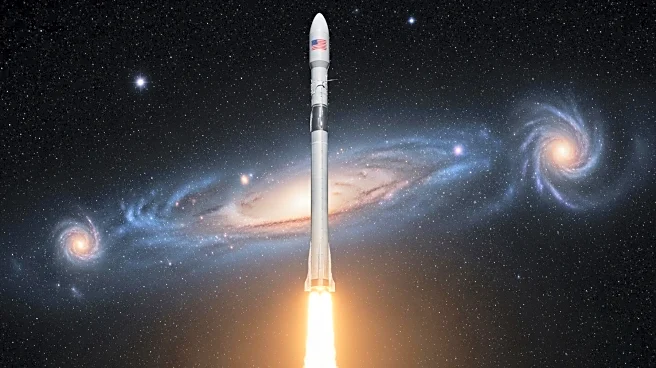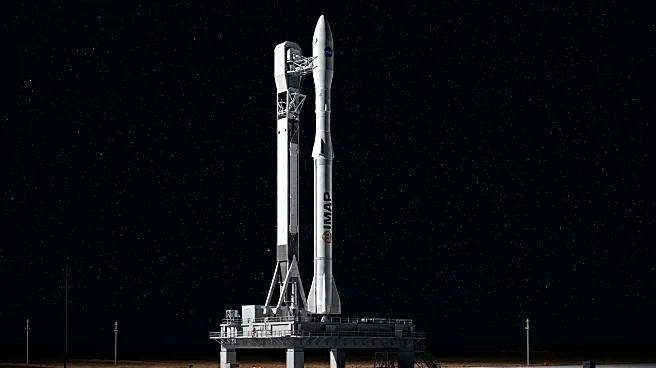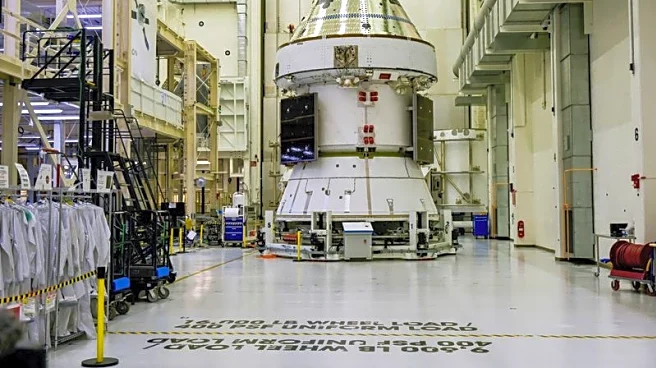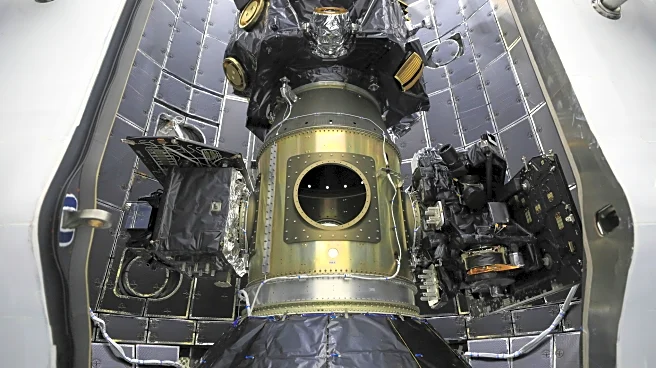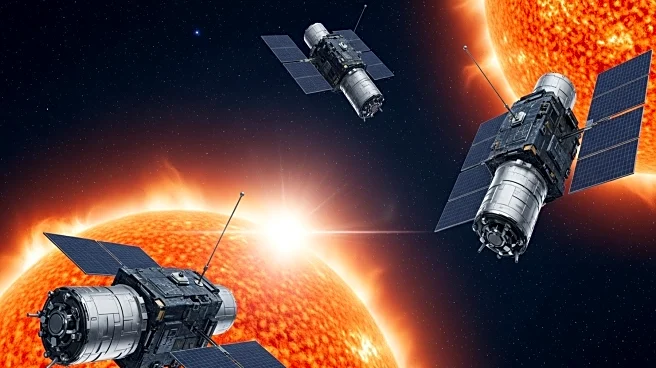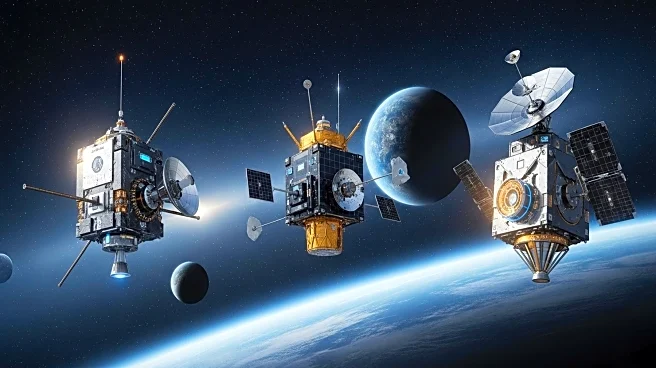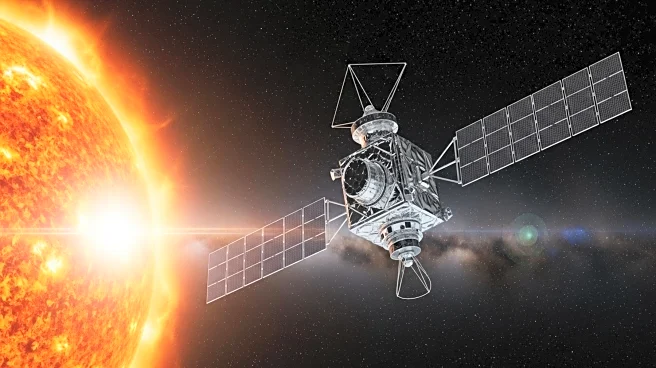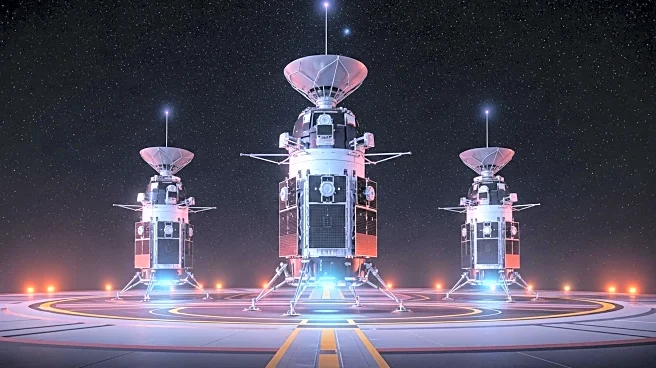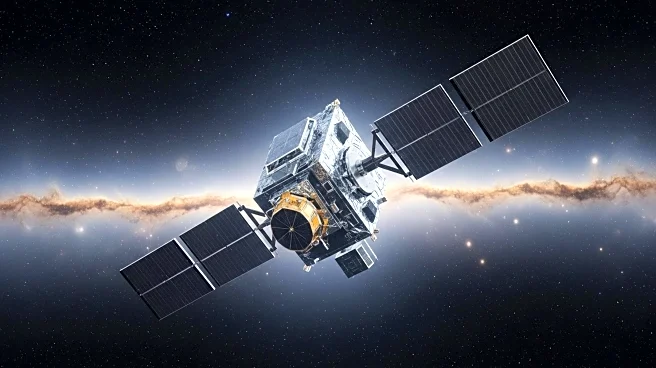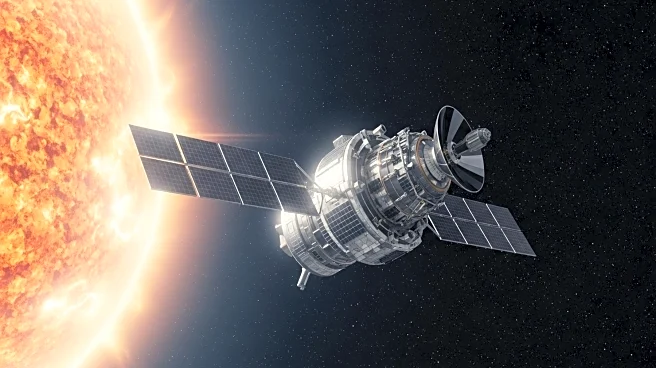What's Happening?
NASA is preparing to launch the Interstellar Mapping and Acceleration Probe (IMAP) mission, designed to map the boundaries of the heliosphere, the protective bubble created by solar wind around the solar system. The spacecraft, weighing 2,000 pounds and measuring 8 feet in diameter, is equipped with 10 science instruments arranged to avoid interference. The IMAP will be launched aboard a SpaceX Falcon 9 rocket from Kennedy Space Center, Florida, and will head towards Lagrange point 1 (L1). The spacecraft's solar array will generate 500 watts of power, ensuring constant energy supply during its mission.
Why It's Important?
The IMAP mission is crucial for understanding the heliosphere's role in shielding the solar system from cosmic radiation. By mapping this boundary, scientists can gain insights into space weather phenomena and their effects on Earth. The mission represents a significant collaboration between NASA and SpaceX, showcasing advancements in space exploration technology. The data collected could influence future space missions and contribute to the development of protective measures for satellites and astronauts against cosmic radiation.
What's Next?
Following its launch, IMAP will travel to Lagrange point 1, where it will begin its mission to map the heliosphere. The spacecraft's instruments will continuously scan the heliosphere, providing valuable data to researchers. The success of this mission could lead to further exploration of cosmic radiation and its impact on space travel. Stakeholders, including NASA and SpaceX, will monitor the mission's progress and analyze the data for future applications in space exploration and technology development.
Beyond the Headlines
The IMAP mission highlights the growing importance of understanding space weather and its potential impact on Earth. As space exploration advances, the need for comprehensive data on cosmic radiation becomes more critical. This mission could pave the way for new protective technologies for satellites and space missions, ensuring safer and more efficient exploration of the solar system.

